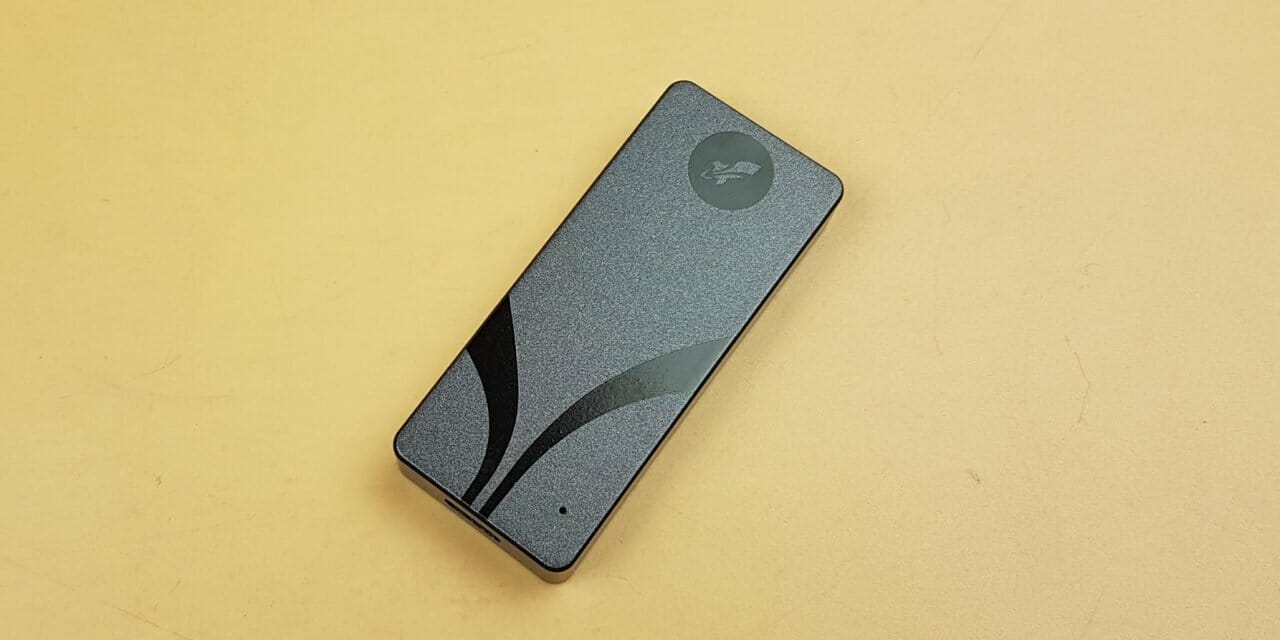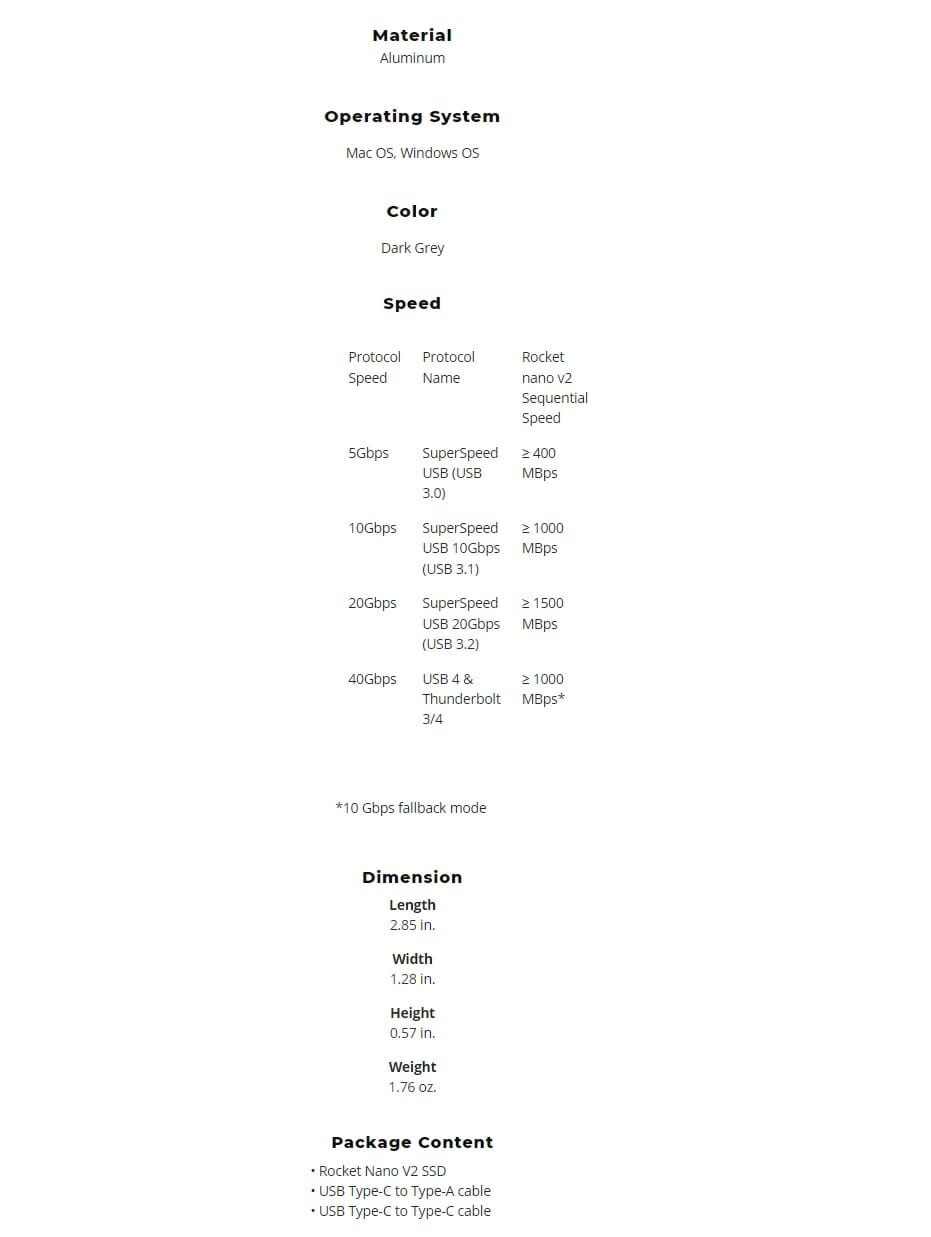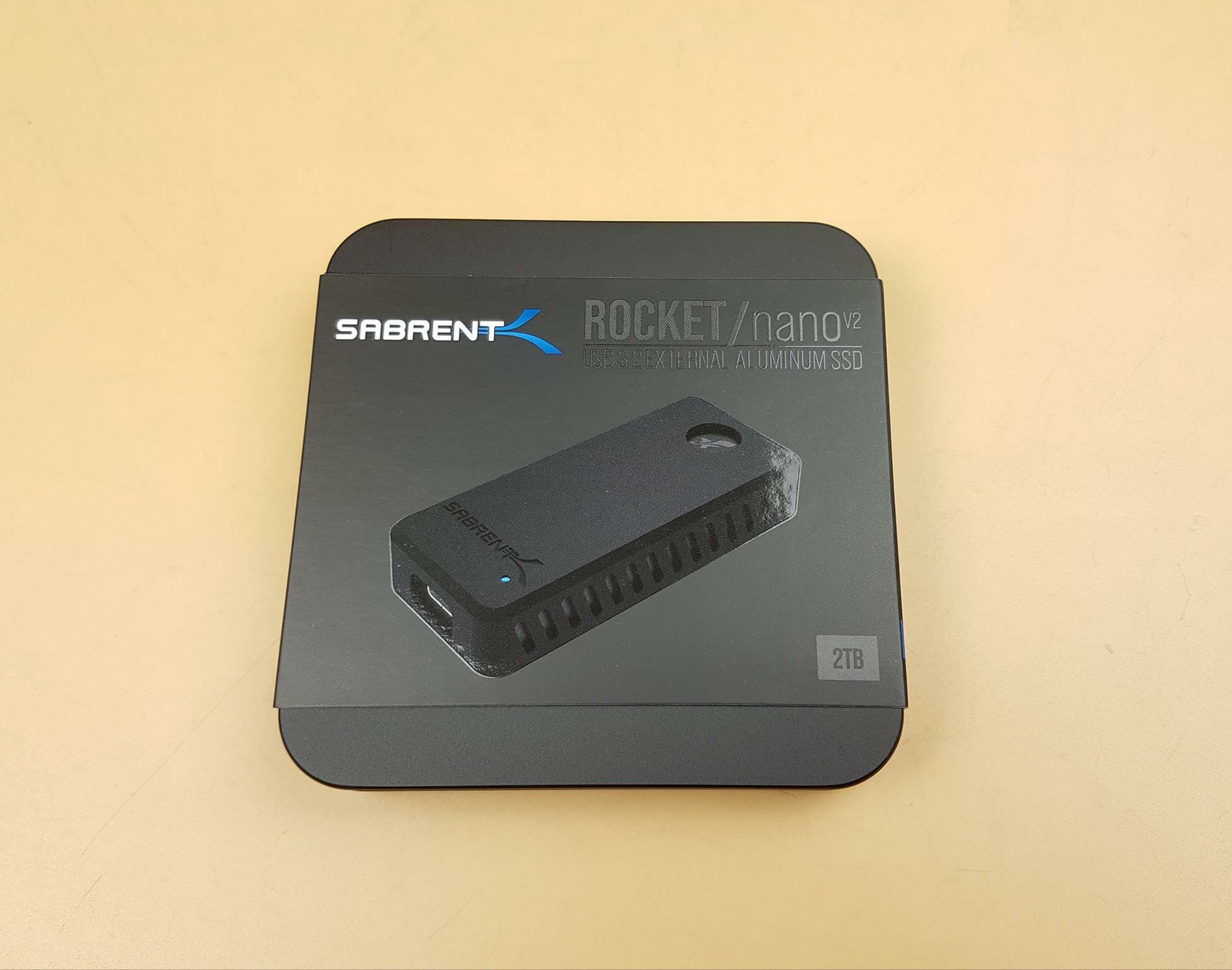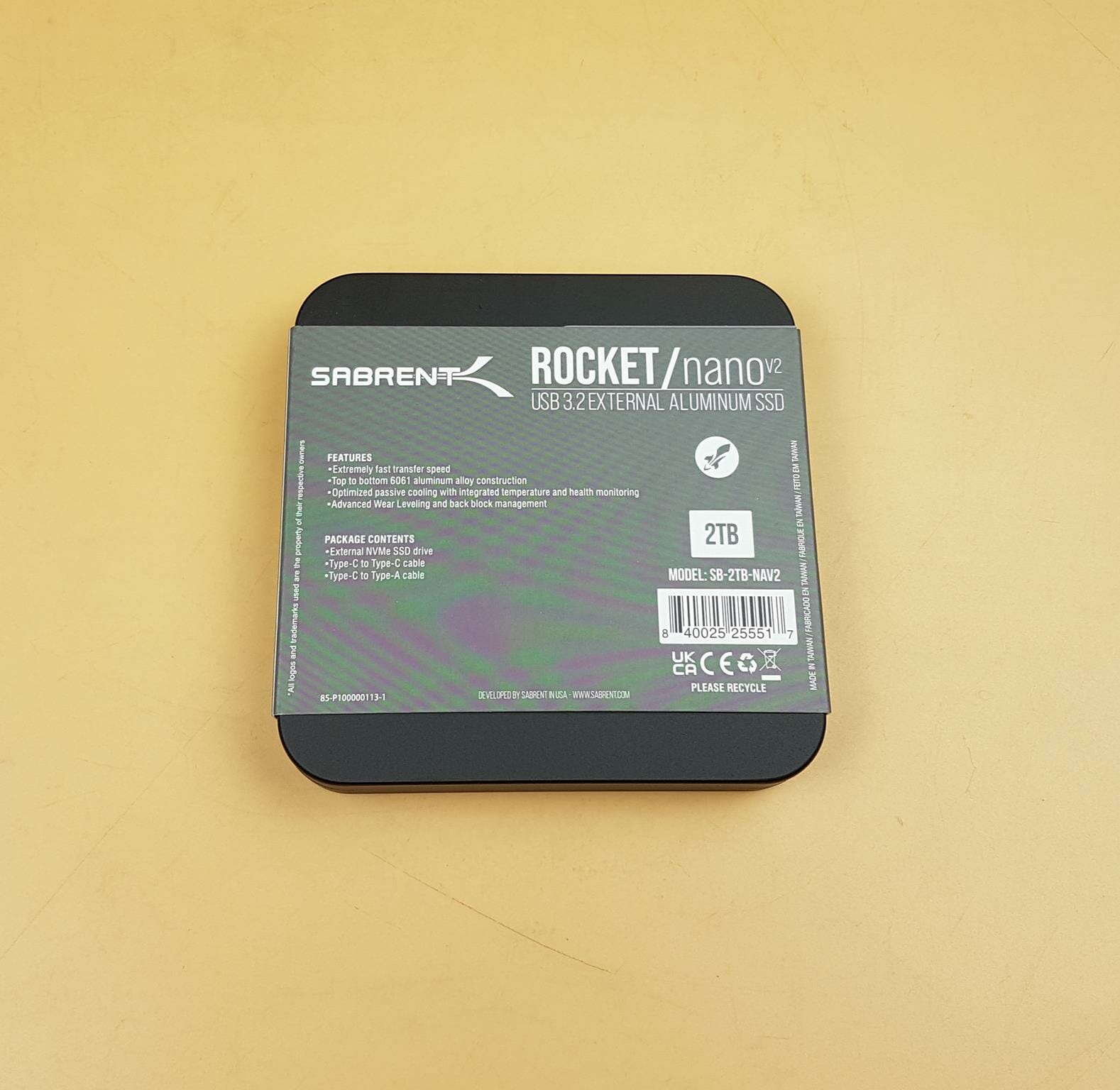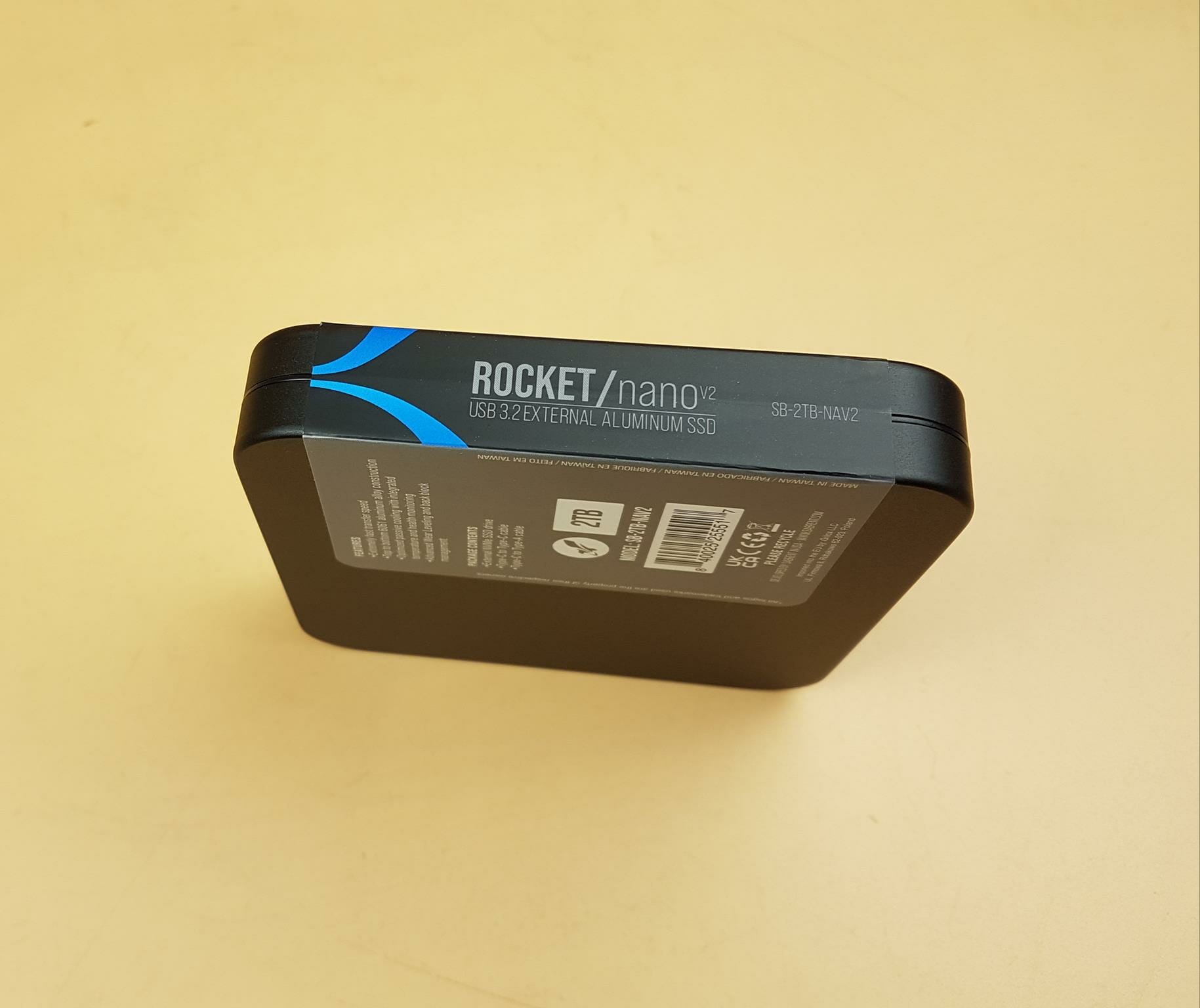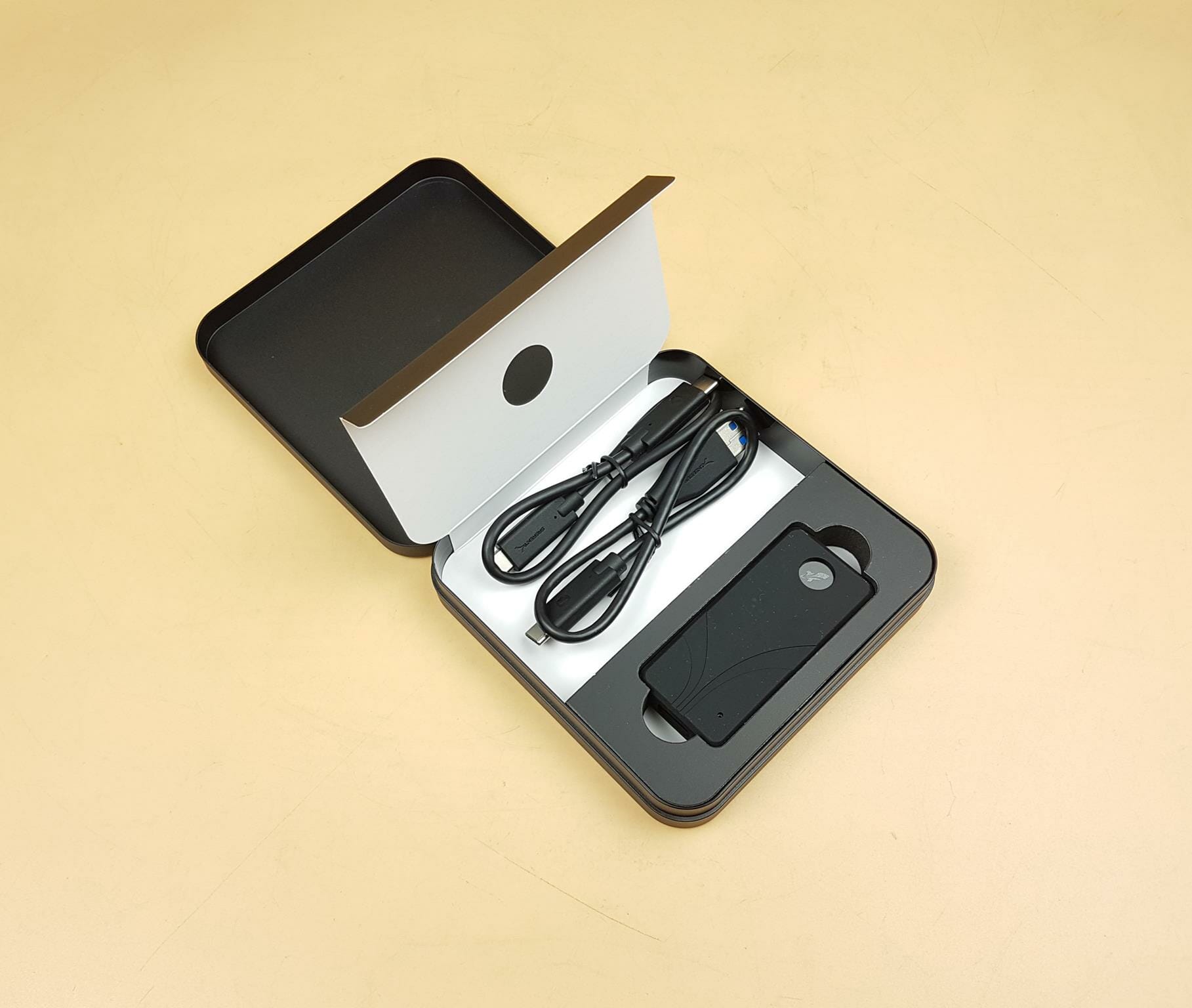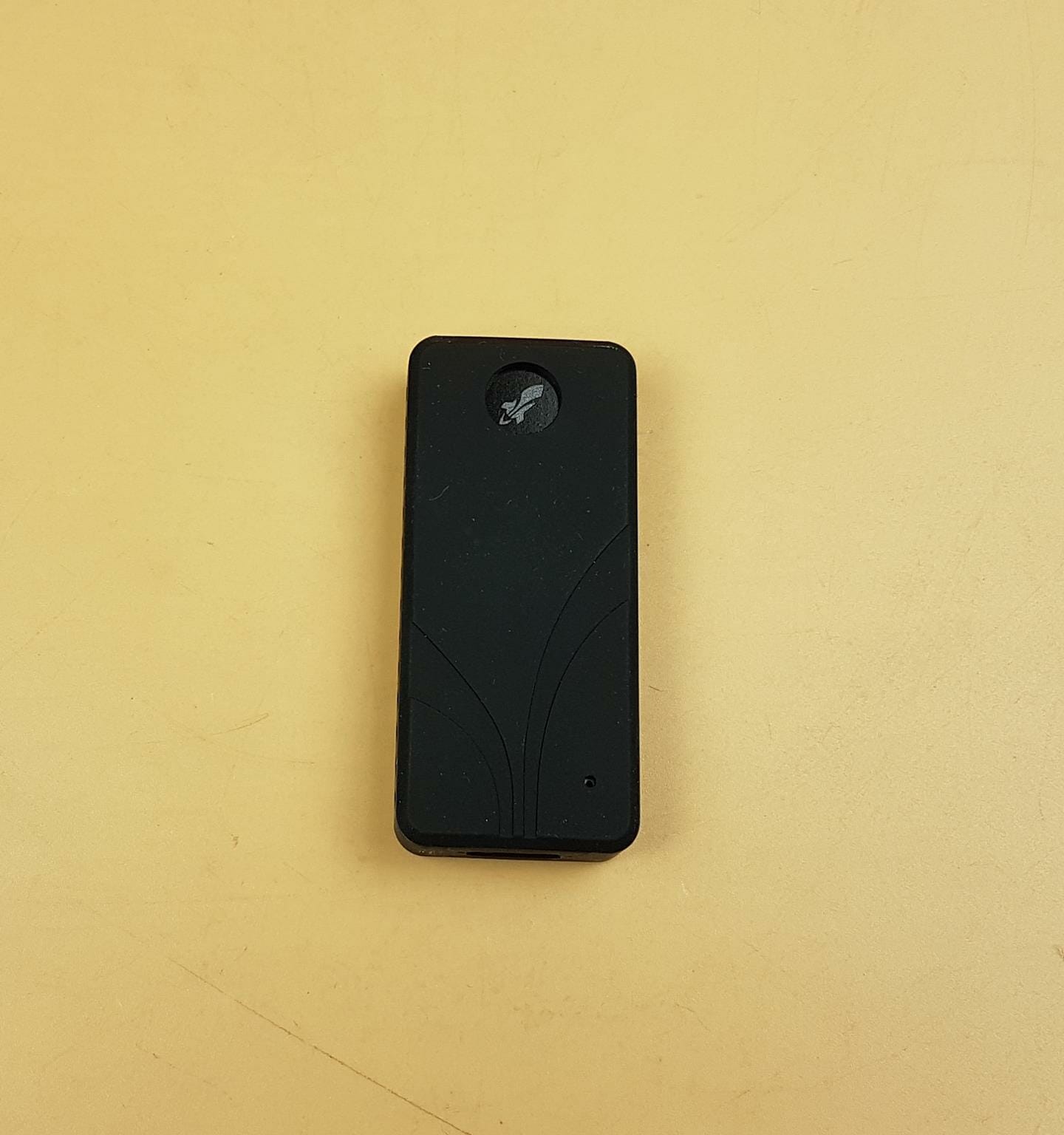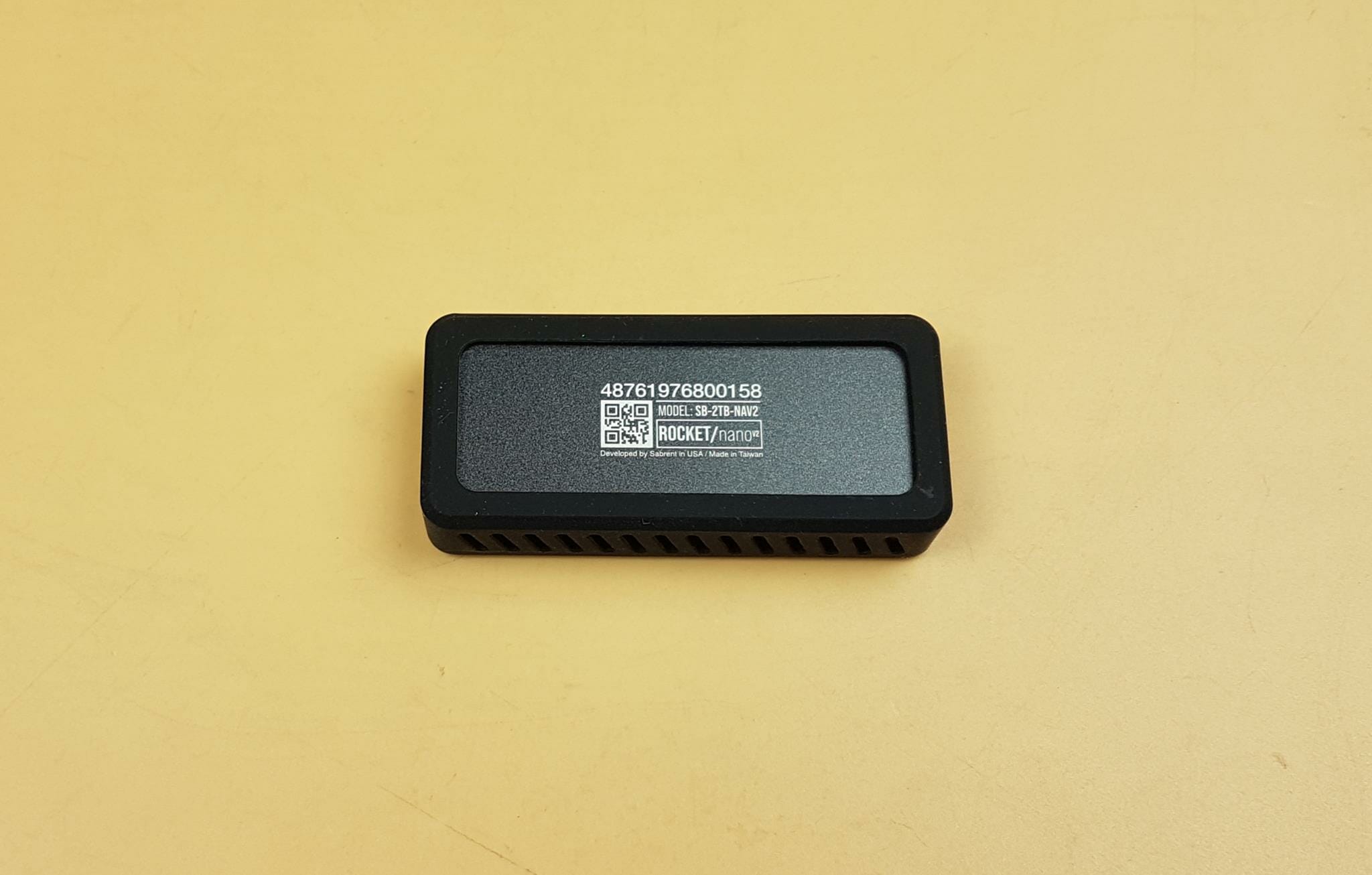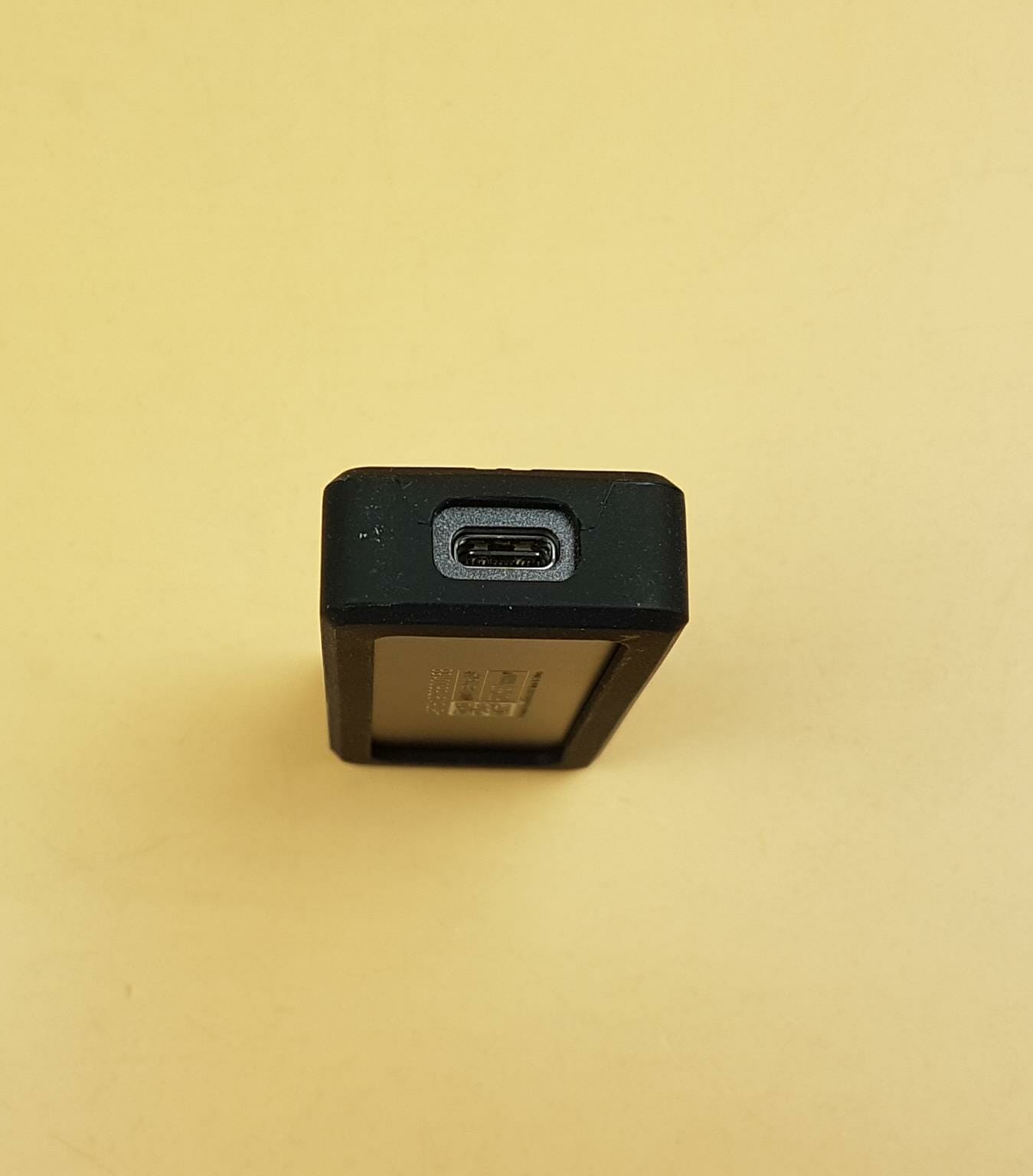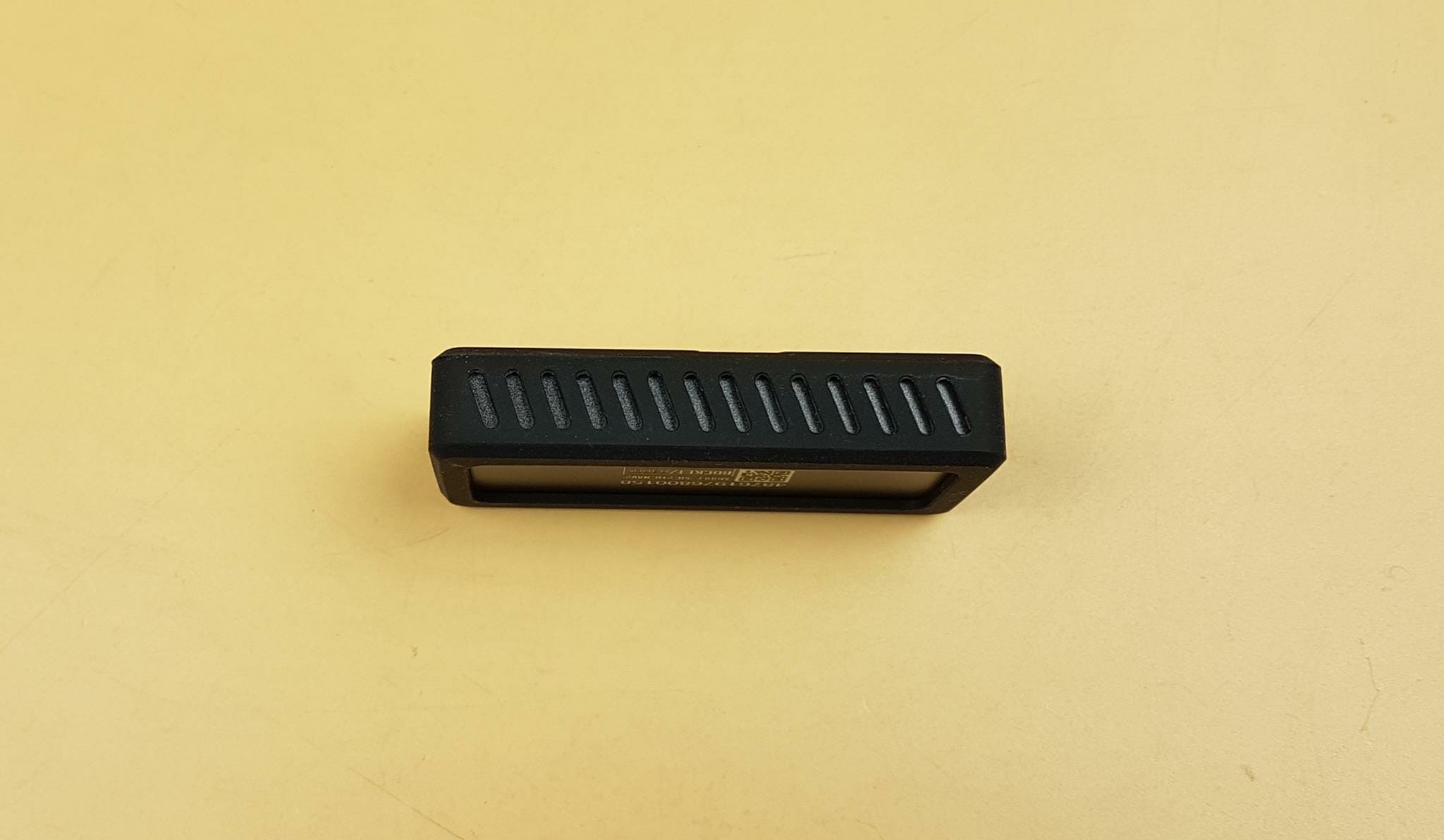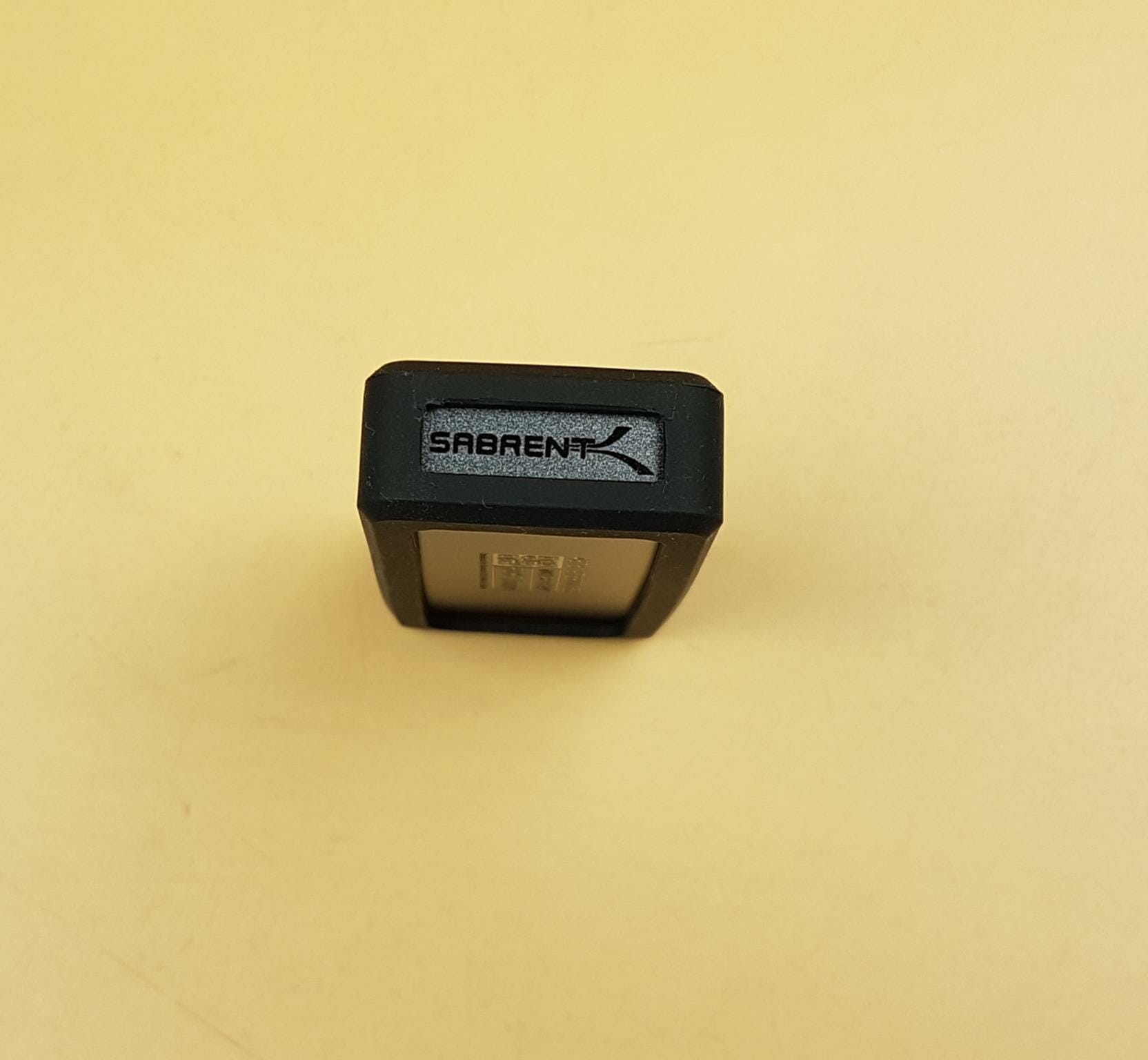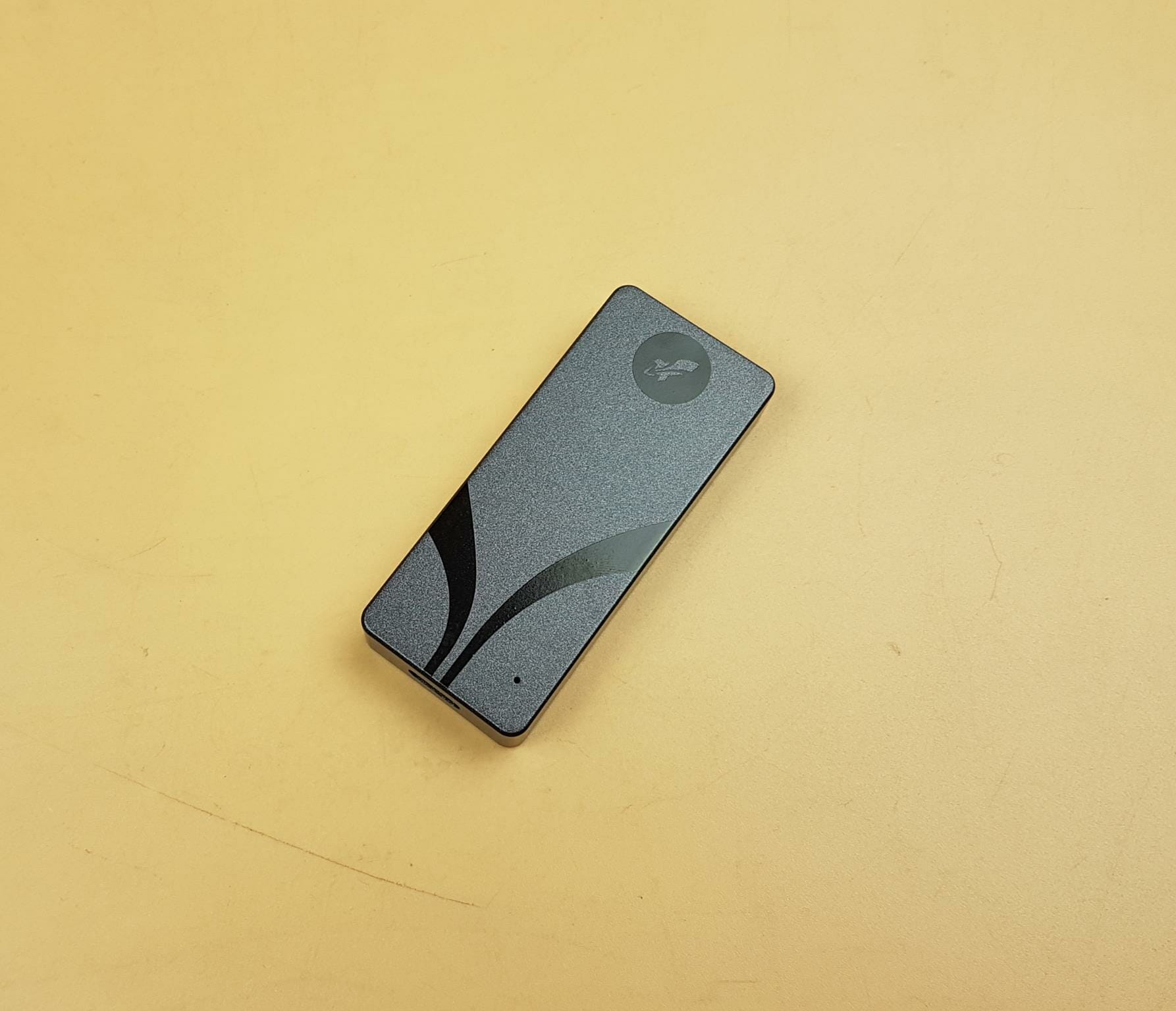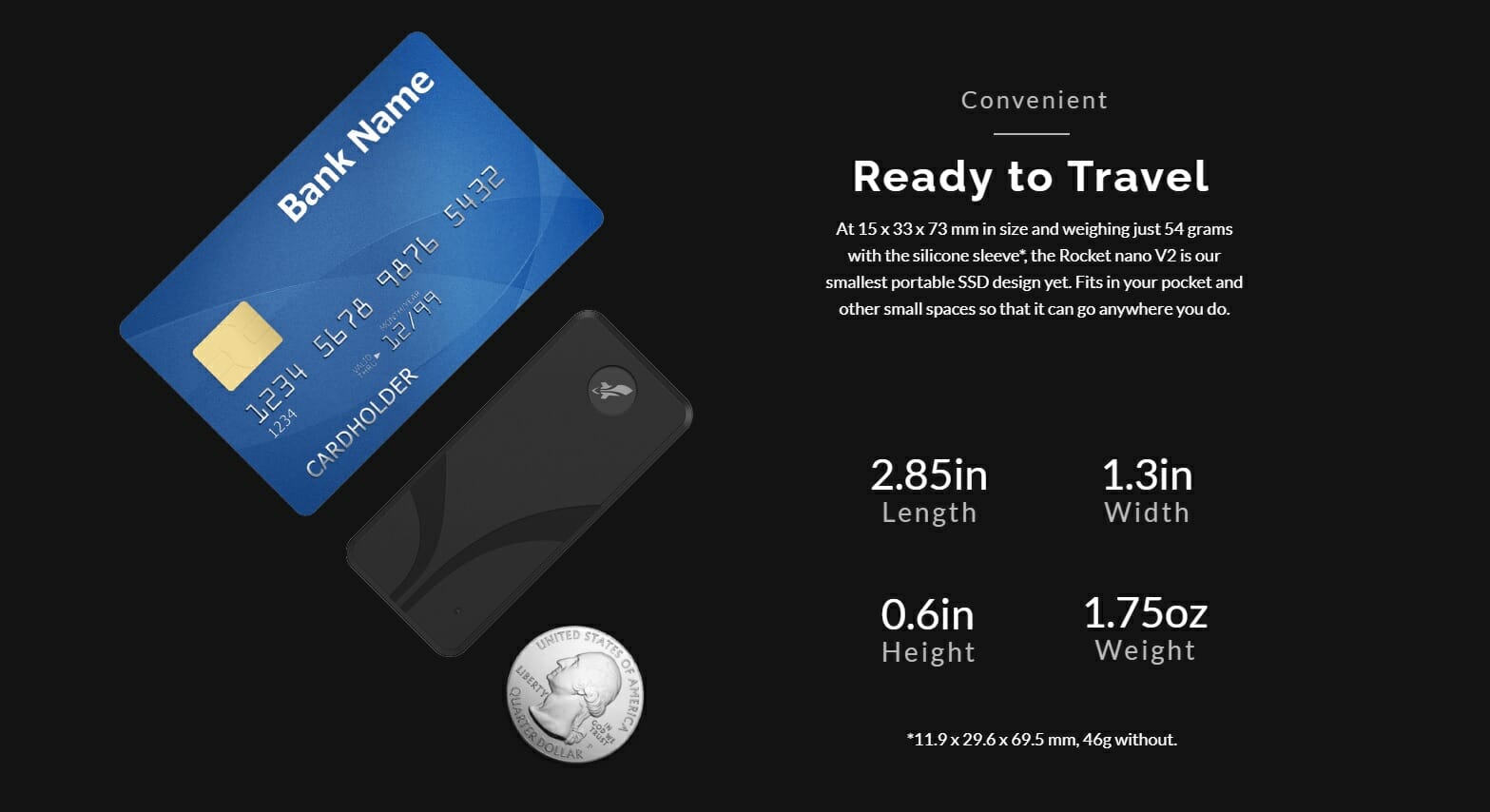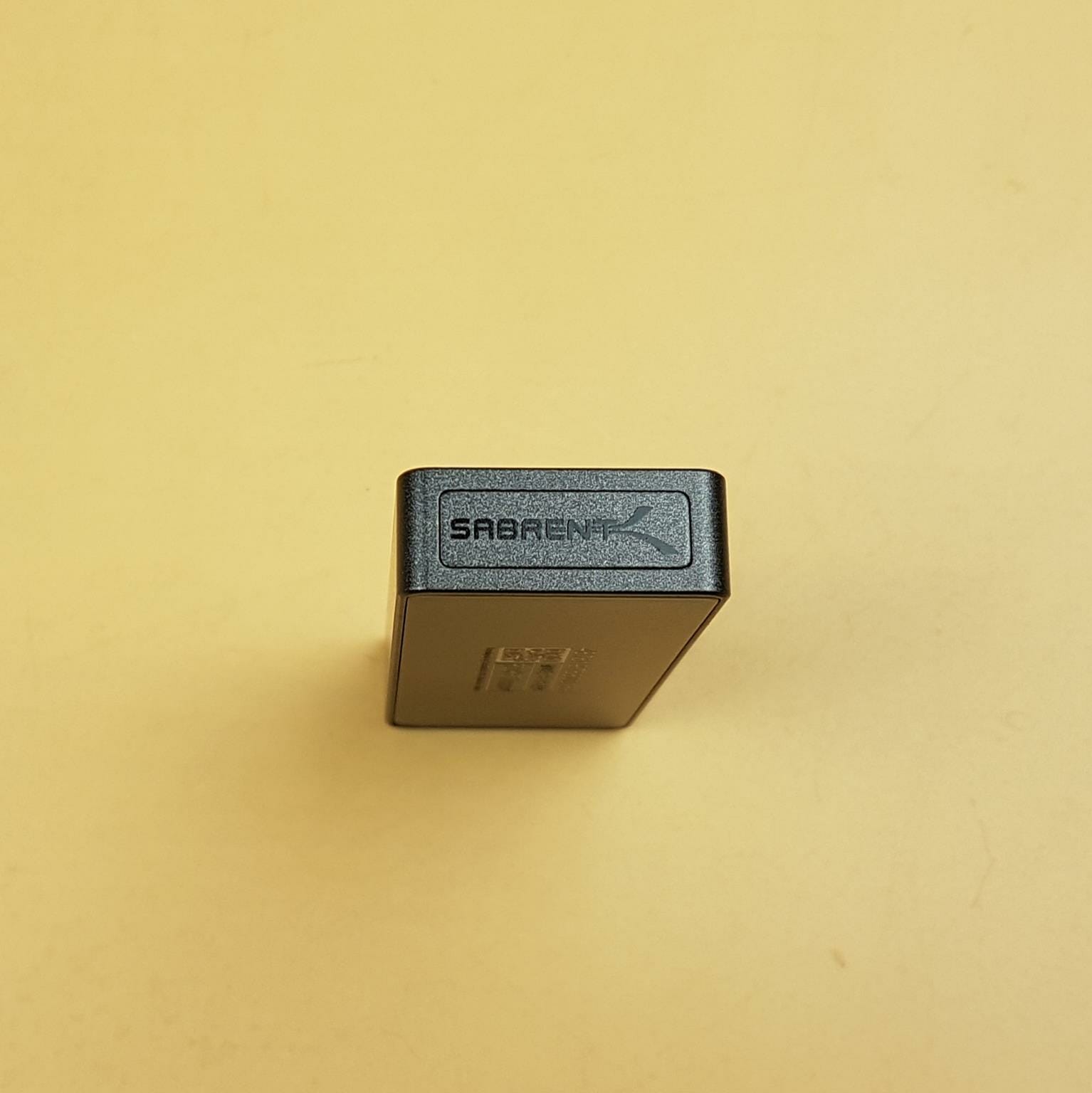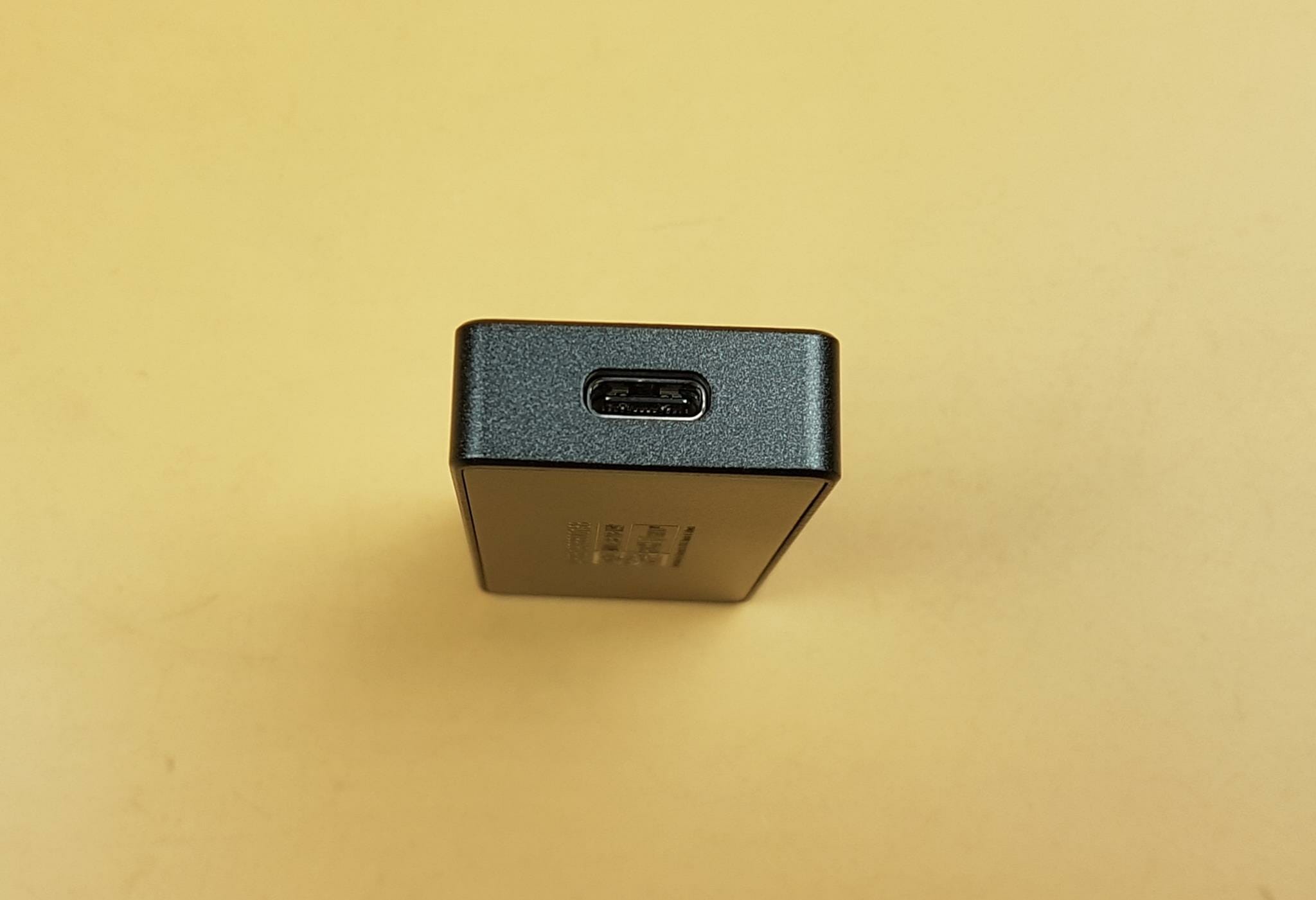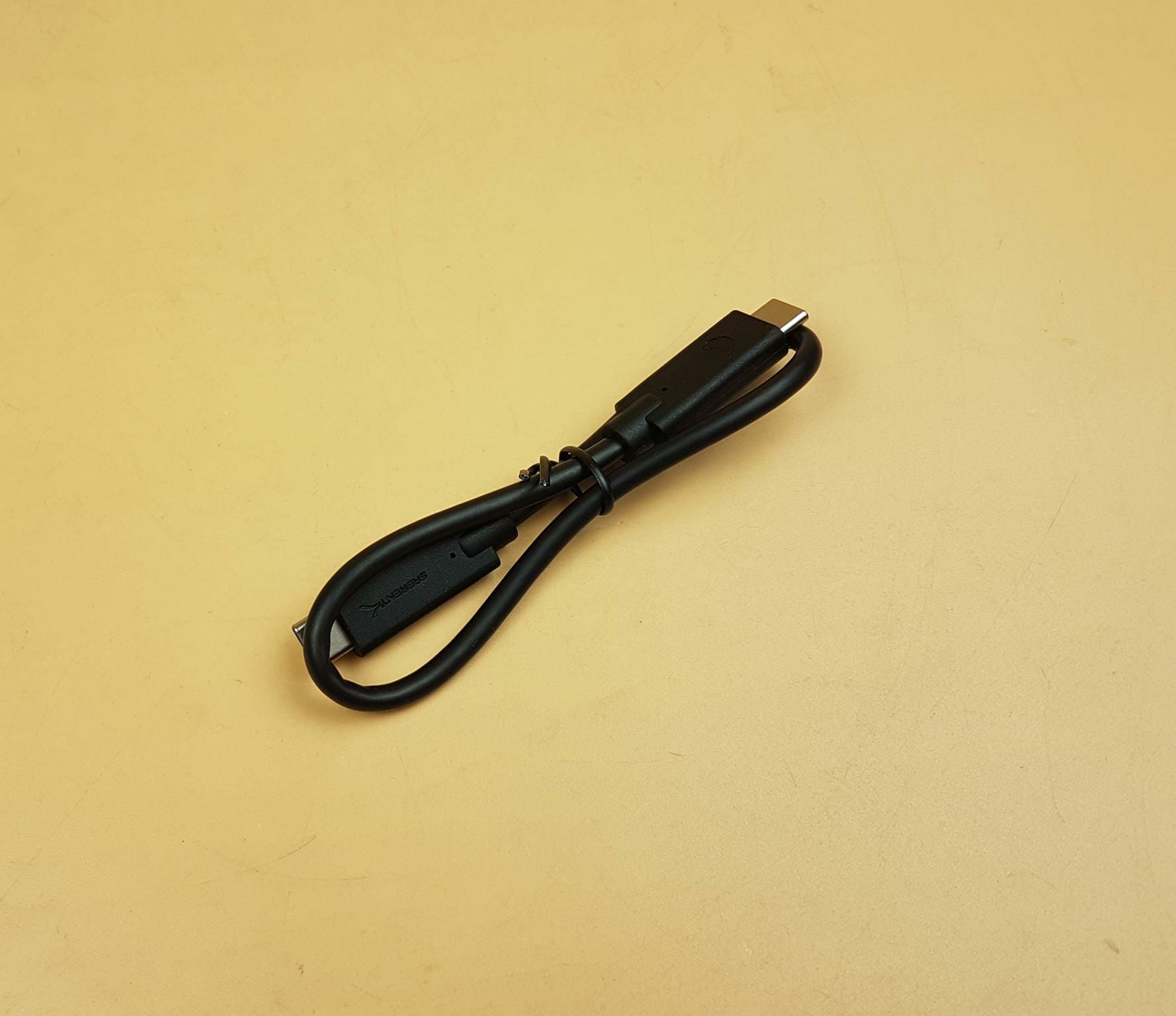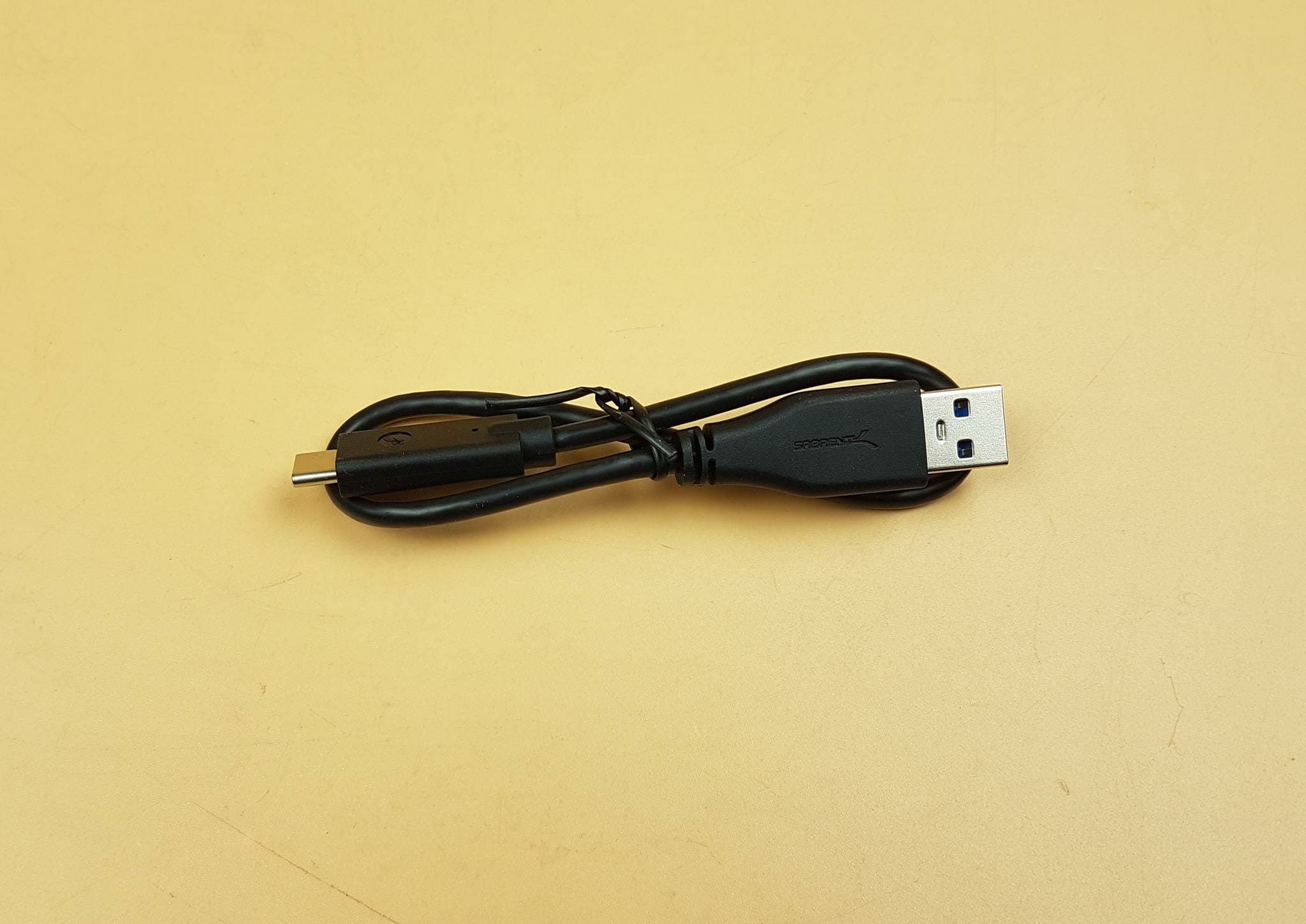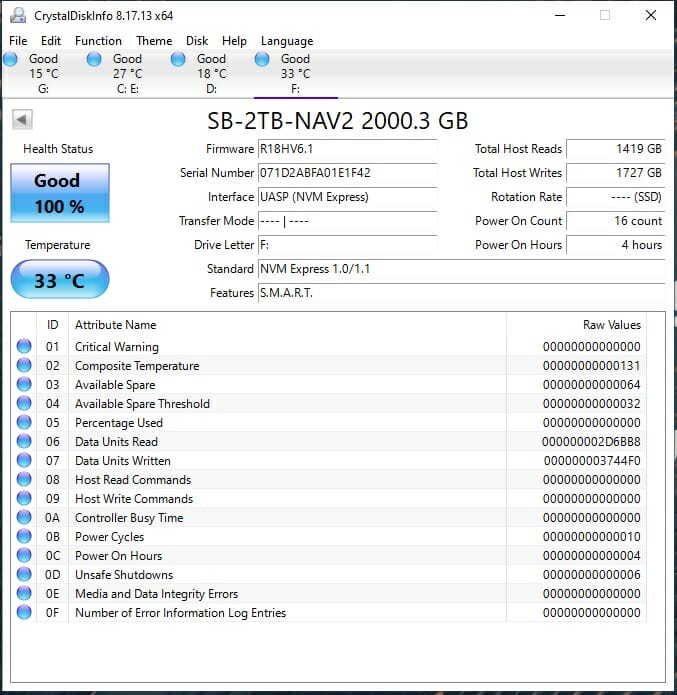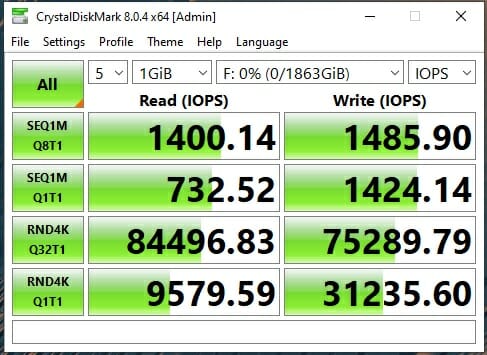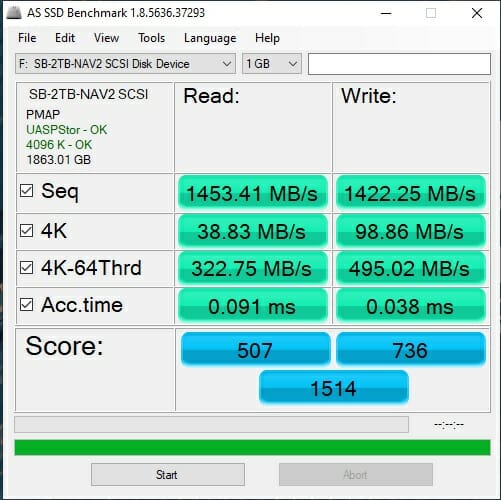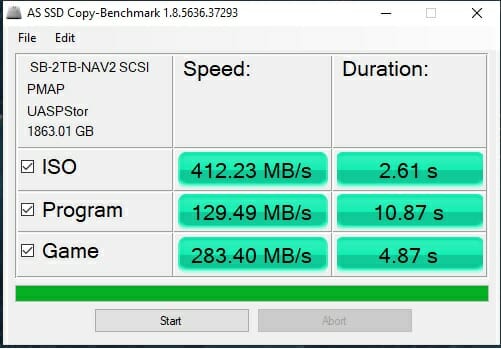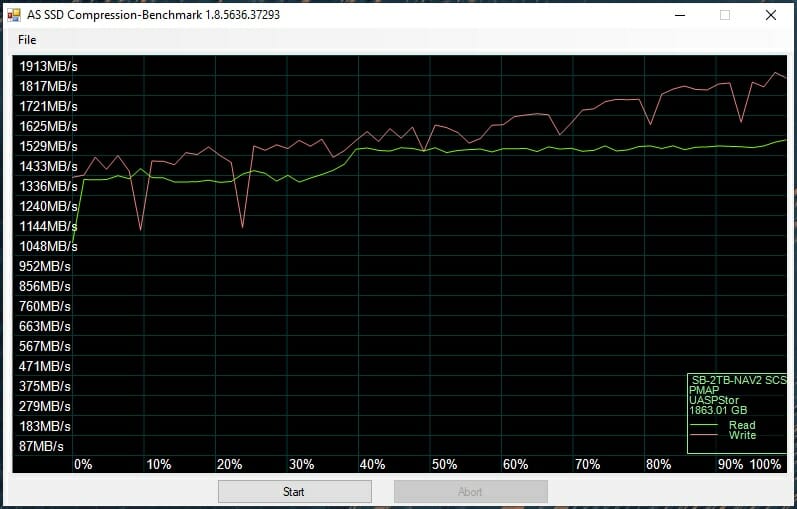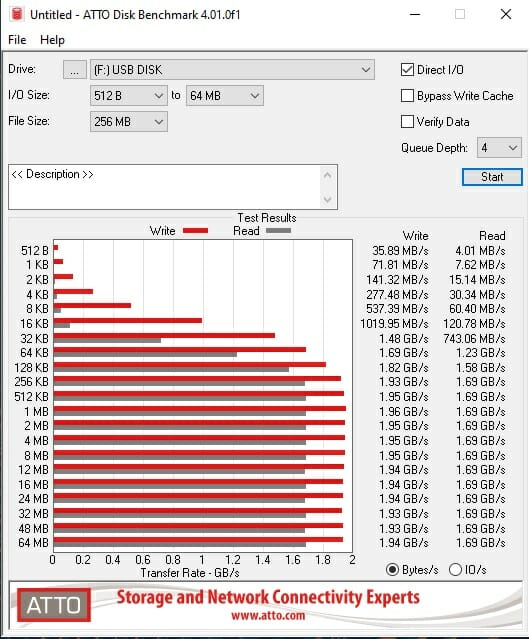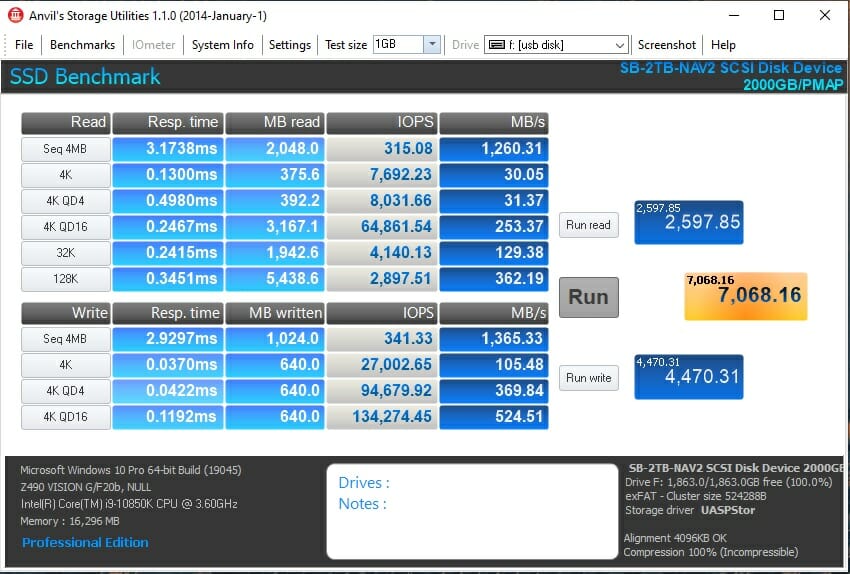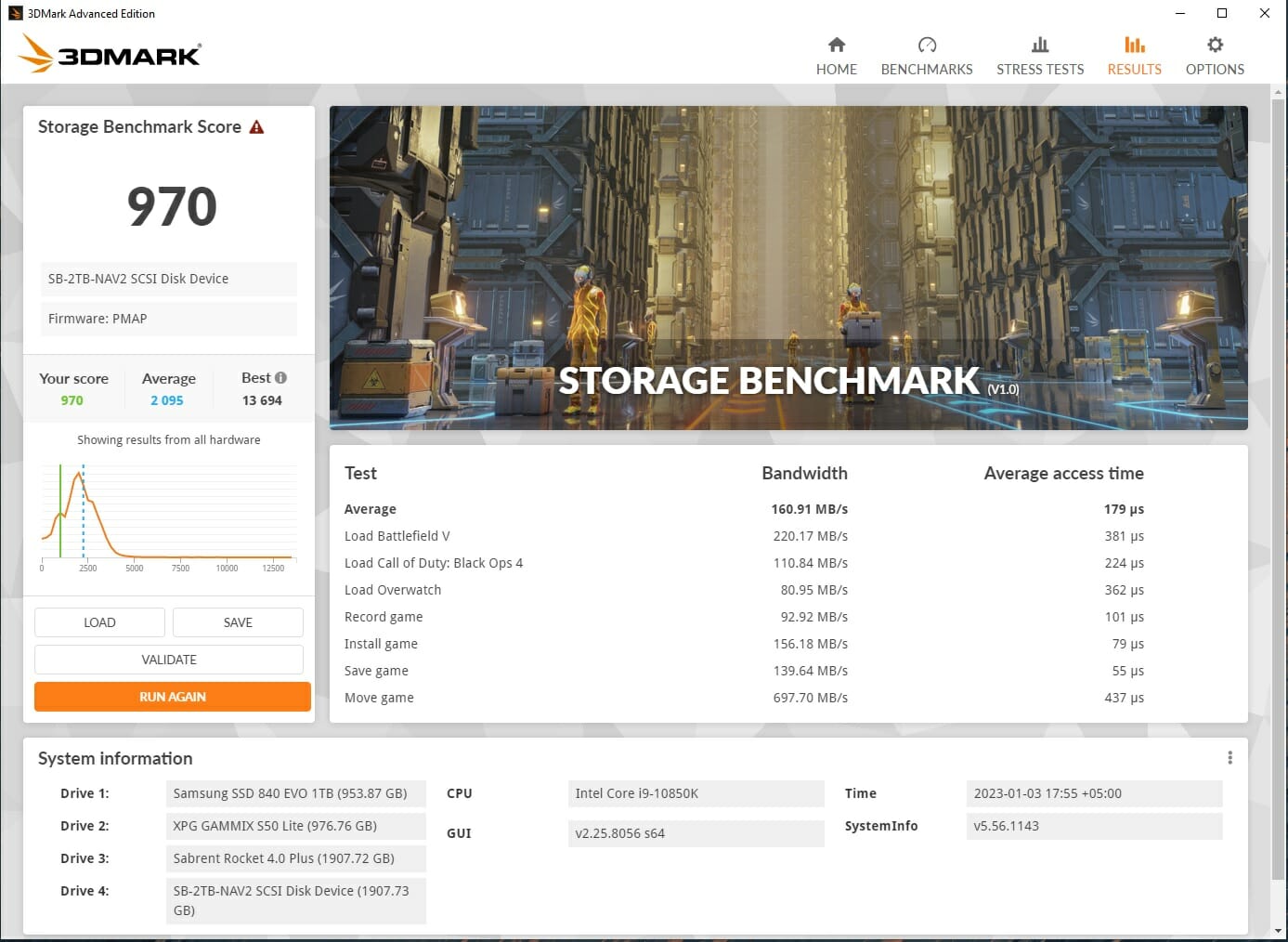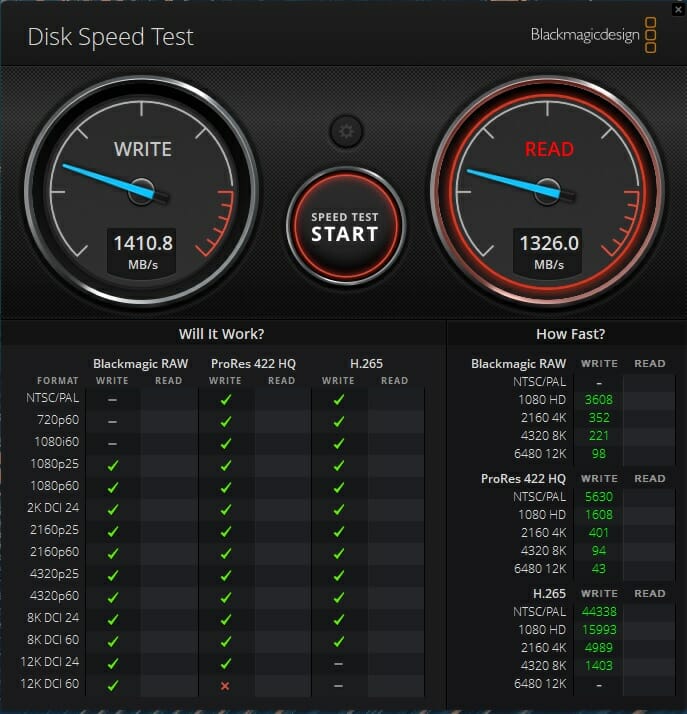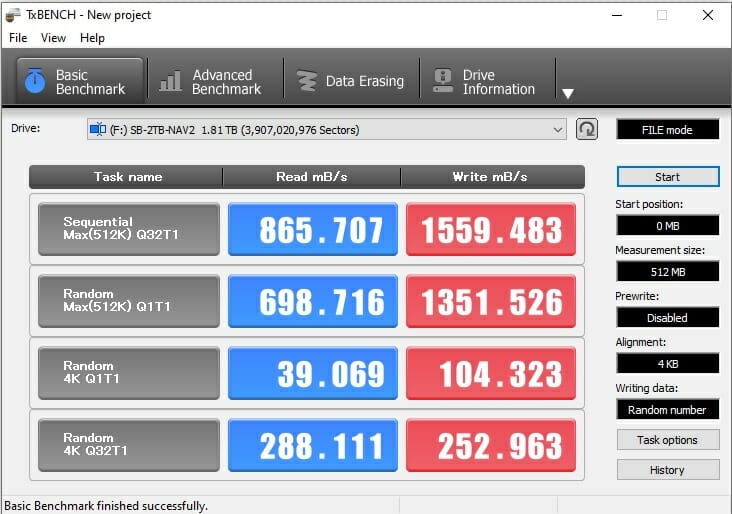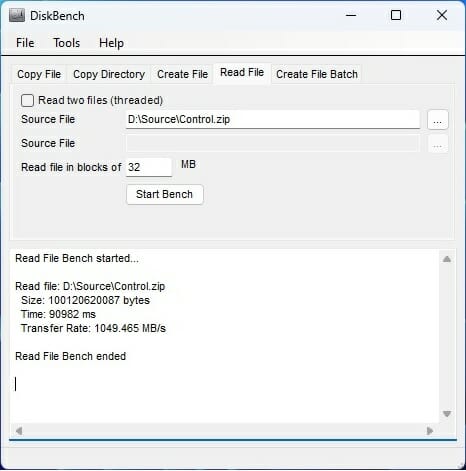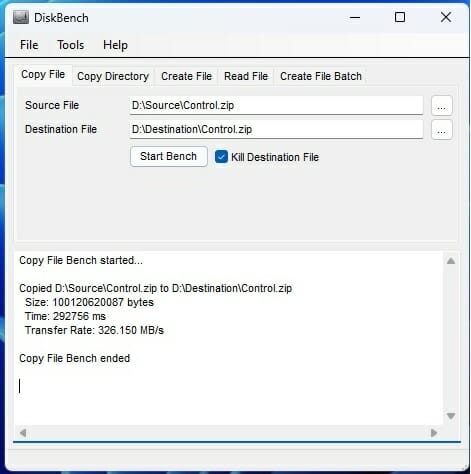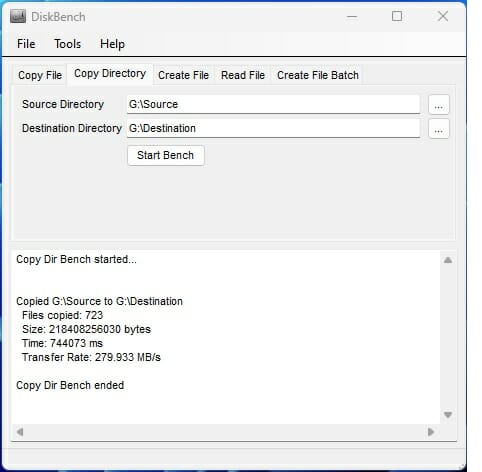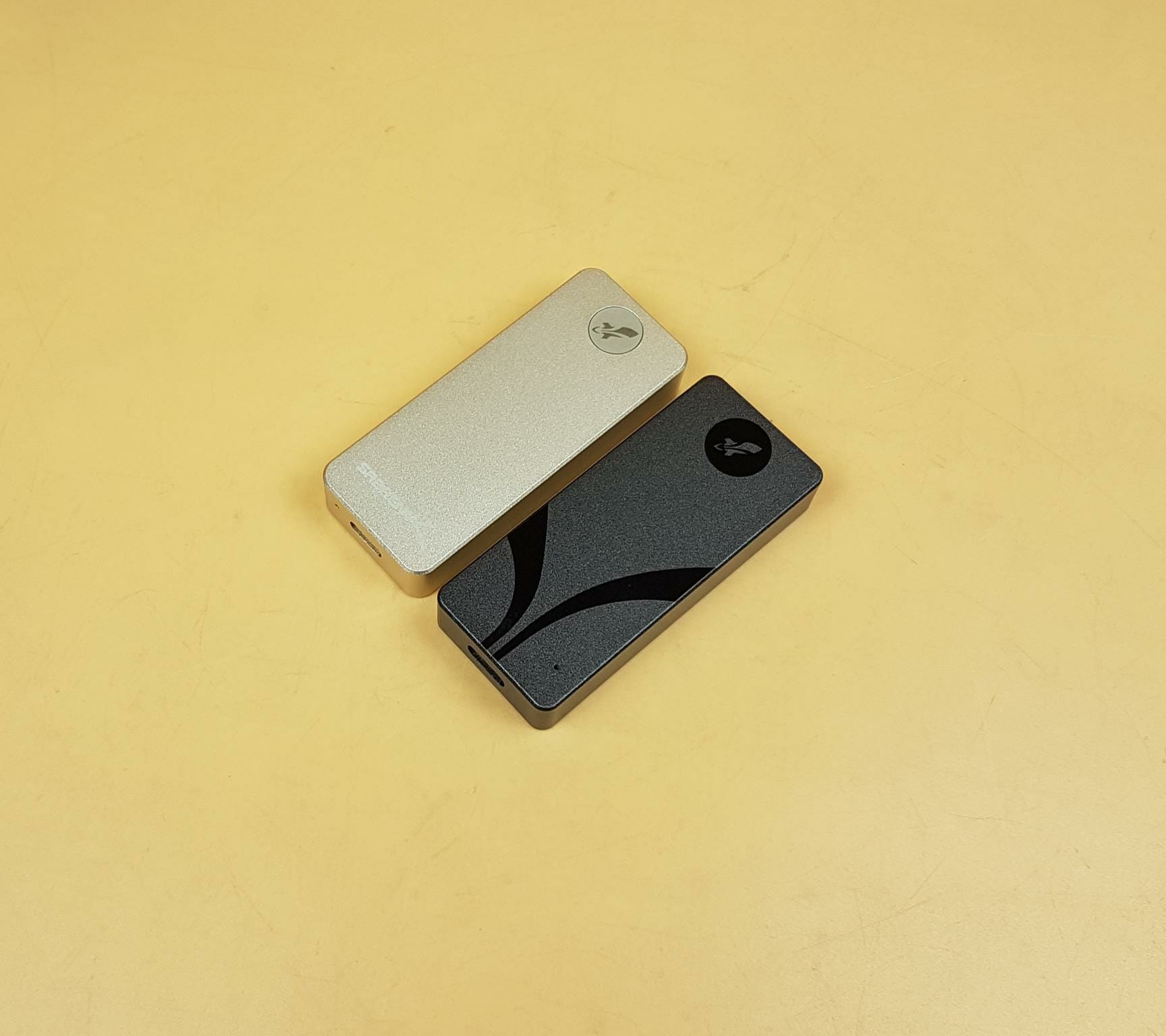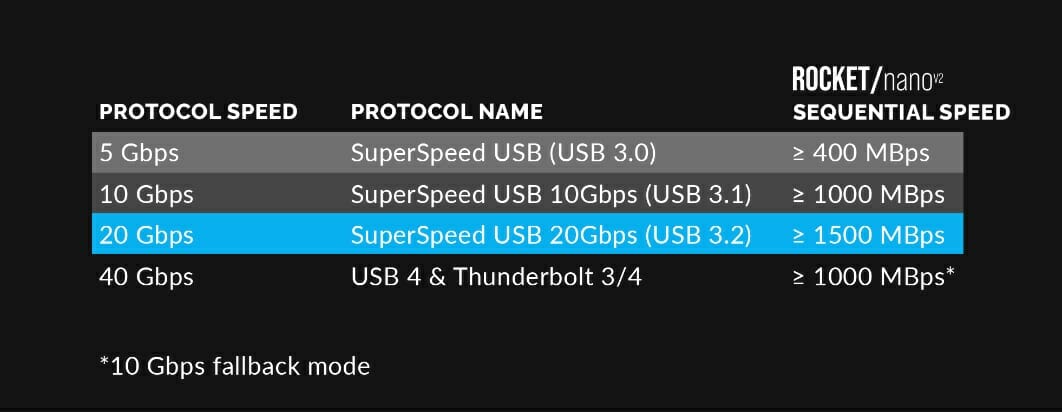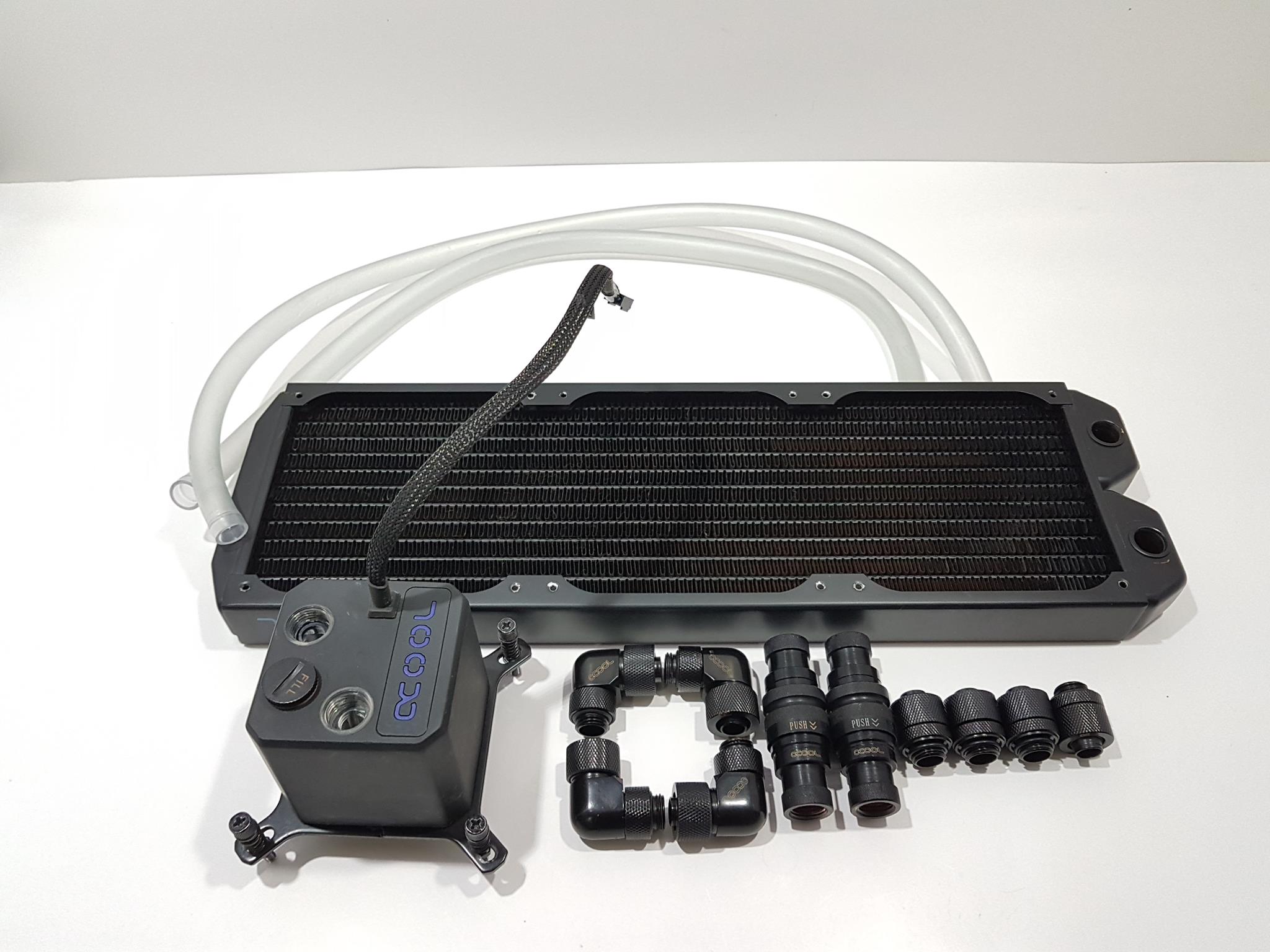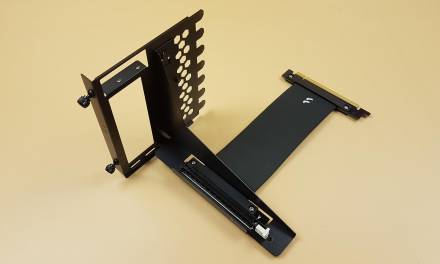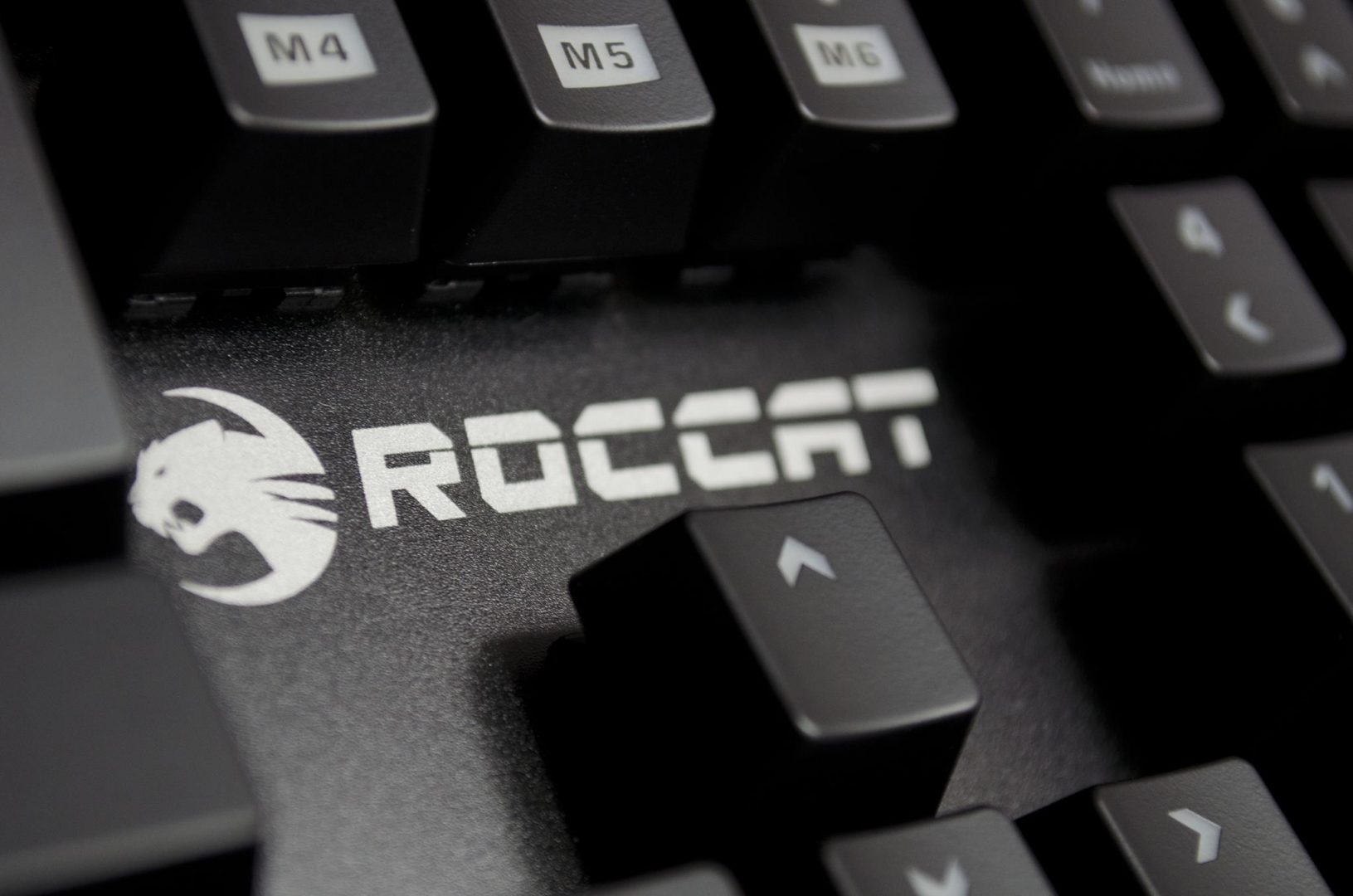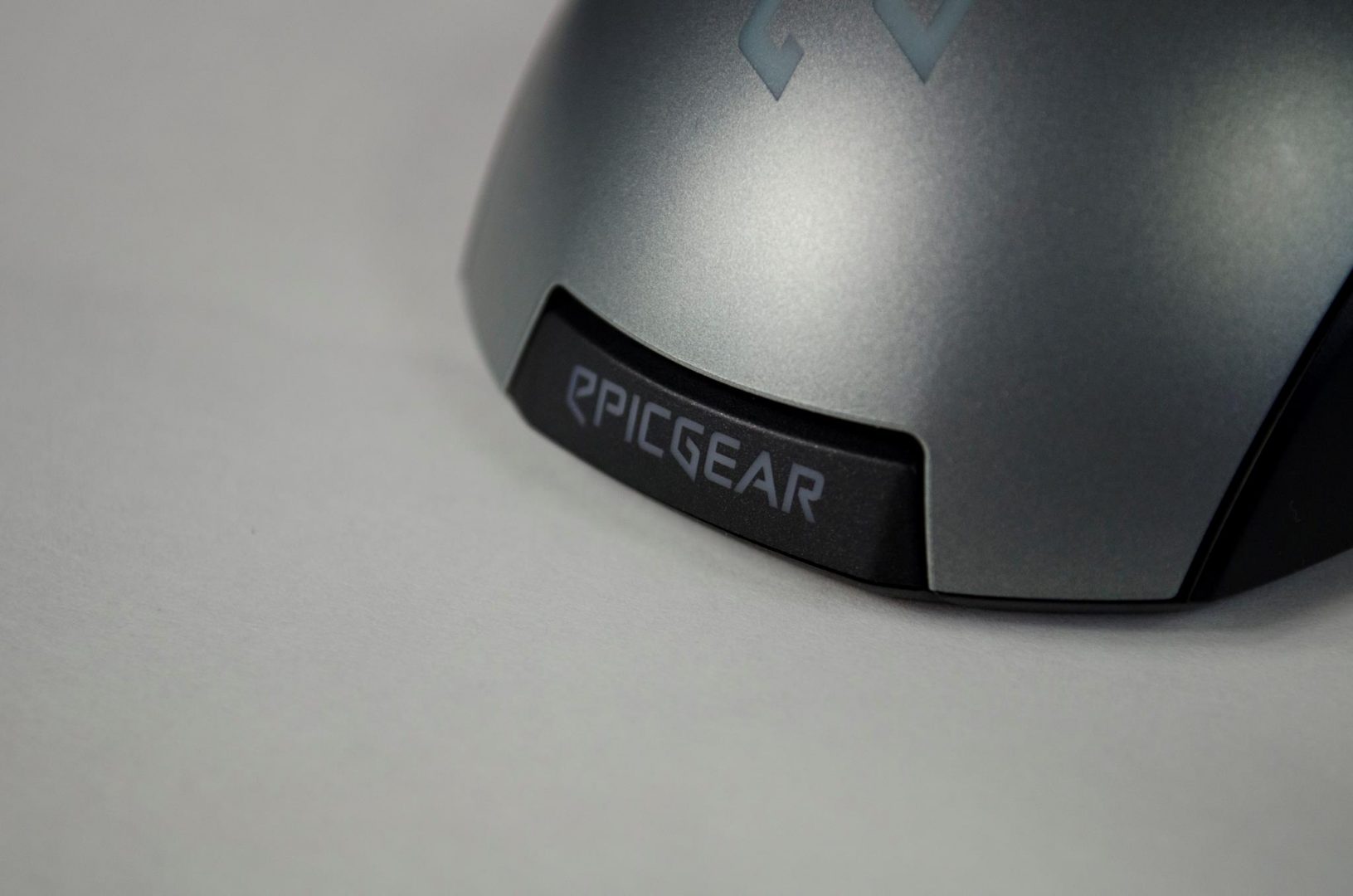Introduction
We earlier tested the Rocket NANo 2TB from Sabrent. Its small footprint and 10Gbps Super-Speed make that drive a compelling option for on-the-go users. However, Sabrent has got no chill as they have released a new NANO. It is called NANO V2 and it is available in only one color, unlike the NANO which was available in 6 colors. Sabrent has put NANO in the EOL category as they will be focusing on V2.
Don’t take NANO V2 for granted as this drive features an onboard UFD controller unlike the majority of the portable drives out there. We will cover that later on the Closer Look section. This drive is using the USB 3.2 Gen2x2 interface which has a theoretical bandwidth of 20Gbps. This drive is rated for up to 1500MB/s in sequential read/write thanks to NVMe SSD being housed inside the aluminum shell.
Product: Sabrent Rocket NANO V2 2TB
Price: $199.99 [At the time of the review]
Specifications
Closer Look
Let’s start with the key features of the drive:
- Burst transfers over 1500 MB/s with sustained performance capable of smooth 8K video recording.
- Transfers over USB 3.2 Gen 2×2 interface for maximum speed.
- Constructed of aluminum with an external silicone sleeve for ruggedness in all conditions.
- Lightweight and portable.
- High-endurance flash and wear management.
- Includes both Type-C to Type-A and Type-C to Type-C cables for flexibility.
- Compatible with a wide range of devices with USB backward compatibility.
- The native UFD controller additionally assures minimal compatibility issues.
The drive is shipped inside a hard shell with essential information printed over the leaflet.
The backside of the cover has the salient features and contents of the box listed.
The model of the drive is printed on the side of the cover.
The above picture shows the contents of the box.
The drive comes wrapped inside a silicone sleeve which makes the drive more rugged and durable as it would protect from accidental falls and debris. The sleeve is black in color. There is a cutout on the top and we can spot Sabrent branding on the drive itself.
The sleeve covers the drive from all around. The base is not fully covered but covered enough to protect the drive during accidental falls. There is a serial number of the unit on the base.
There is a cutout on the sleeve facing the USB Type-C port.
There are cutouts on both sides for effective heat transfer or ventilation.
Sabrent has left no corner uncovered. There is a cutout to show the Sabrent branding on the drive.
Now that we removed the sleeve, let’s take a look at the main unit. Sabrent has used space-grade aluminum alloy via CNC machining for the shell or housing of the drive. This material is said to have better heat transfer and is durable. The Sabrent branding is visible on the top. There is a white color LED indicator on the bottom right to show the drive activity. The dimension of the unit is 2.85×1.28×0.57 inches (LxWxH). The weight of the unit is 1.76oz.
The Rocket NANO V2 series is available in three sizes:
- 1TB
- 2TB
- 4TB
- Grey
The above picture compares the size of the drive with the credit card. This highlights the small footprint of the drive making it conveniently portable.
There is a Sabrent branding on one side of the drive. The sleeve has a cutout to expose this branding which is a wise design.
The drive is using USB Type-C interface. This drive is using USB 3.2 Gen 2×2 protocol over the USB Type C interface. The theoretical throughput for this protocol is 20Gbps. This is double the bandwidth of the Rokcet NANO which is 10Gbps. The drive is listed for up to 1500MB/s read and write sequentially. This is not all as this drive is said to sustain 800MB/s speed under heavy loads. The drive is said to have a sustained performance capable of smooth 8K video recording.
There is a USB Type-C to Type-C cable provided in the box.
There is a USB Type-C to Type-A cable provided as well in the box.
This would allow the user to connect the drive as per the available USB port in the system though using USB Type-A would reduce the transfer rate. The length of these cables particularly the Type-C to Type-C cable is short. This would be difficult if we are connecting the drive directly with the PC. The Sabrent Rocket Nano series drives are compatible with Microsoft Windows and MAC OS. They are plug-and-play and don’t need any software and are backward compatible with USB protocols.
What makes this drive special?
We have mentioned above that this drive has a native UFD controller. What does it mean? So far, portable drives boasting high speeds have been using bridged chip design. Meaning they are using two controllers to connect the SSD with the interface like USB 3.0, USB 3.2, etc. The main issue with this design is the high-power draw which results in more heat and a lack of good enough backward compatibility with multiple hosts.
No more! Sabrent has ditched that design and has come up with the onboard USB controller to interface directly with the host and the target. This not only eliminates the bridging but improves the power efficiency which in turn reduces the heat generated by the controller. There is another key benefit which is extreme backward compatibility says up to USB 1.1.
Sabrent has employed Phison PS2251-18 USB 3.2 Gen2x2 controller on this drive which eliminates the bridging and provides a direct connection that is faster.
As we can see using this controller, the drive is now compatible with the USB 1.1 interface. Sabrent is using SK Hynix 128L TLC chips (NAND) on the NVMe SSD. This provides a powerful combination of the NAND and controller to deliver a fast and smooth data transfer rate. The controller also has a thermal sensor which is a plus to the design.
Sabrent has provided the power draw as follows:
| Read | 500mA |
| Write | 550mA |
| Idle | 150mA |
| Suspended | 1.7mA |
This is a game changer for portable drives as this drive is using almost the best power efficiency possible out there.
Testing
The following configuration is used:
- Intel i7 13700k [Stock, Auto
- ASRock Riptide Z790
- XPG Lancer RGB 32GB 6000MHz CL49
- EK-AIO Elite 360 D-RGB
- Sabrent Rocket 4 Plus 2TB NVMe SSD [OS Drive]
- MSI GeForce RTX 3090 Gaming X Trio 24G
- be quiet! Straight Power 11 850W Platinum PSU
- Thermaltake Core P6 TG Snow Edition in an open-frame layout
We have used the following software:
- AS SSD 1.8.5636.37293
- ATTO Disk Benchmark 4.0
- CrystalDiskMark 6
- Anvil Pro Storage Utilities 1.1.0
- Black Magic
- TxBench
- 3DMark Storage
- DiskBench
Microsoft Windows 11 22H2 is used for this test. We did not have to initialize the drive as it came formatted and ready to use from the factory. 1.86TB out of 2TB is available for the user.
The drive is S.M.A.R.T ready. No other software was able to read the temperature of the drive except the DiskInfo. TRIM seems to be separated as we can’t see it in the listing. The drive supports TRIM. This makes block management more efficient.
Test Results
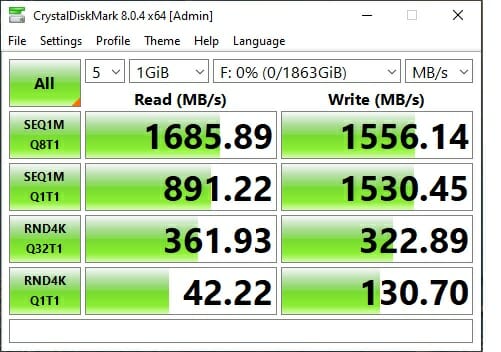
The CDM run has confirmed the sequential read and write speeds of the drive. The 4k performance is fine as well.
Next, we run the AS SSD software to test the performance of the drive. Please, note that each stress testing software works differently and there would be variations between software and between two runs even on the same SSD. We have an overall score of 1514 from this test run.
The above is a result of the AS-SSD Copy benchmark. It shows the speed and duration of different workloads giving an idea of the real-world use scenario. Scores are self-explanatory.
The above pictures show the result of the Compression benchmark run from AS-SSD. Ideally, we would not want dips across the length of the line for both read and write operations. The write speeds show a continued increasing trend going above the 1800MB/s mark. The reads on the other hand remain below the 1500MB/s mark.
Next, we ran the ATTO Disk Benchmark to test the drive’s performance. We have a maximum read (sequential) speed of 1.69GB/s which is quite impressive. The maximum write speed was 1.94GB/s. The drive has an exceptional performance in sequential.
Next, we ran the Anvil Storage Utilities benchmark to test the performance of the drive. On the default test size of 1GB, the tested read speed score was 2597.85. The write speed score was 4470.31 with an overall score of 7068.16.
3DMark Storage Test
3DMark Storage test is relatively a new test bench measuring the gaming-only performance of the given drive using three games. It measures the load time of the games, recording the gameplay, saving the game, and moving the game. The overall score is given in the bandwidth and access time.
The Sabrent Rocket 4 Plus 2TB SSD did an average of 160.91MB/s and 179µs.
Black Magic
TxBnech
Real World Testing
We have used DiskBench in multiple scenarios to check the real-world data transfer rates. Here are the results:
A compressed file of 97GB containing multiple compressed files and folders of different sizes was copied to the Rocket NANO V2 2TB. The file was then read from the DiskBench. We have a transfer rate of 1049.465MB/s with a time of 9 seconds.
Next, we copied the same compressed file from one folder to another on the same drive. The transfer rate is 326MB/s.
Next, we copied a folder of 210GB size containing multiple compressed files, sub-folders, and mixed other files. The transfer rate was 279.933MB/s.
Gaming Load Time
We have also calculated the loading time of the game using the Final Fantasy XIV: Shadowbringers Benchmark using High settings. This is meant for users who would like to store a few games on the external fast storage.
Game Load
We have a load time of 13.565 secs.
Thermals
We saw a maximum temperature of 52°C at an ambient temperature of 13°C on the Rocket NANO V2 2TB.
Conclusion
Sabrent’s new Rocket NANO V2 series portable drives have more to them than meets the eye and Sabrent means business with them. These drives are available from 1TB to 4TB capacity. The maximum on NANO was 2TB. Sabrent has managed to keep the same size of the drive as is of the NANO.
The above picture compares the sizes of Rocket NANO 2TB GOLD and Rocket NANO V2 2TB.
The Sabrent Rocket NANO V2 2TB is the Sabrent’s smallest ever portable drive that can fit in even the smallest pockets. This is an enthusiast-grade fast-storage solution from the manufacturer based on USB Gen 3.2 Gen 2×2 on a Type-C interface. These drives are rated for up to 1500MB/s read and write sequentially. This is not all as these are said to have sustained an 800MB/s rate under heavy load and are capable of smooth 8K video recording.
The outer shell or housing of the drive is made of high-grade aerospace aluminum alloy which is CNC machined for perfection. This housing not only adds rigidity to the drive but also transfers the heat from the drive to protect it from overheating. Sabrent has provided 2x cables with the drive. One is the USB Type-C to Type-C cable whereas the second one is the USB Type-A to Type-C cable. The drive was hanging when it was connected to my PC (Rear IO panel of the motherboard) due to shorter length cables. The drive supports Advanced Wear Leveling and Bad Block Management.
This drive has our high praise as it houses an onboard USB 3.2 Gen2x2 controller which eliminates the bridging design. The control is Phison PS2251-18. This controller supports up to 4TB capacity and supports TLC as well QLC NAND types. Speaking of NAND, the V2 houses SK Hynix 128L TLC chips. The controller is power efficient as this drive has the following power data:
| Read | 500mA |
| Write | 550mA |
| Idle | 150mA |
| Suspended | 1.7mA |
The above picture summarizes the supported speed on NANO V2 when connected to different protocol interfaces. Take a closer look; if you would connect this drive to USB 4 or Thunderbolt interface then eh supported speed would be 10Gbps.
During our test, we have seen the drive confirming the rated 1500MB/s sequential read and write speeds in the synthetic benchmarks with a better 4k performance. This is too good a performance from this class drive and clearly makes it faster than the regular 2.5” or 3.5” SATA-based drives. Real-world performance is obviously what matters and our testing has shown this drive capable of handling anything. It was able to sustain 700 MB/s after caching which is remarkable.
The Rocket NANO V2 2TB drive is listed at USD199.99 at the time of the review. Sabrent is offering a 1-year warranty that could be extended to 3 years upon registration of the drive on their website. The very name of NANO is serving the true purpose of this drive here. We have a lightweight, compact form, high-capacity, fast external storage solution at the disposal of the user which has a good performance in its class.
Thanks to Sabrent for the provision of the unit.

